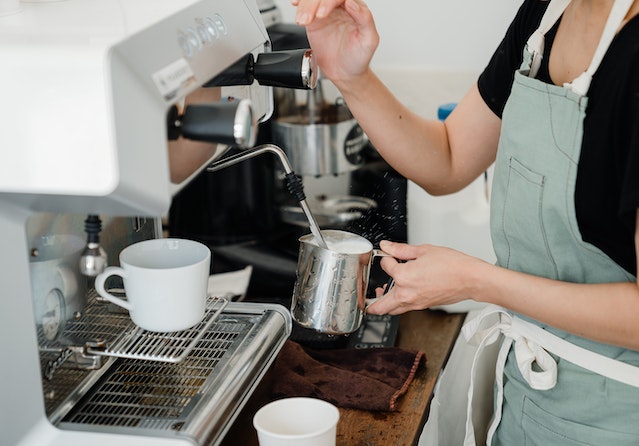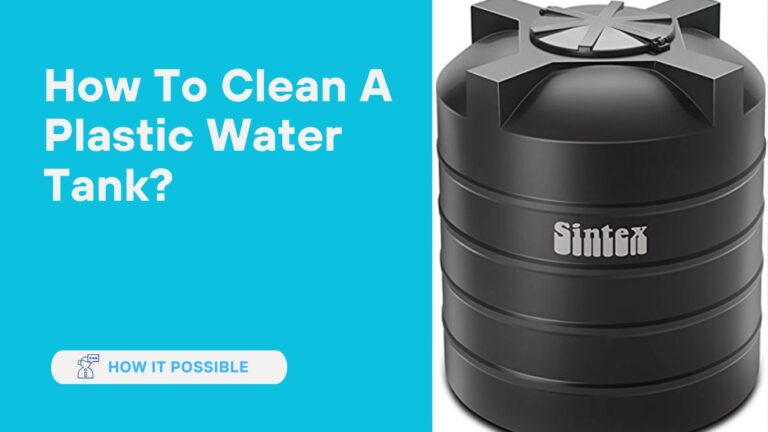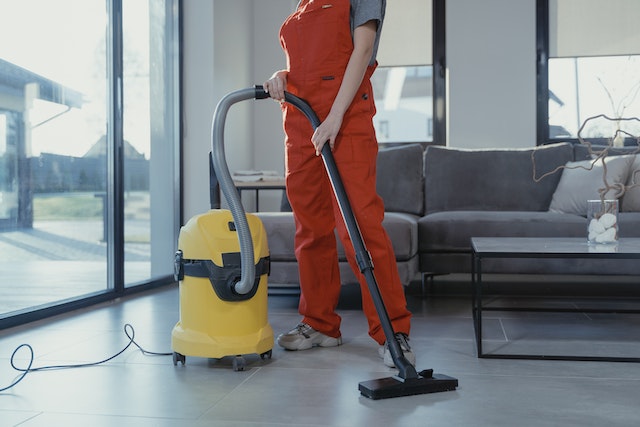How To Clean Brita Water Bottle Mouthpiece
As a result of the convenient and portable design of the Brita water bottle, it has become a popular choice for people on the go who need access to filtered drinking water throughout the day. It is, however, essential to pay attention to cleaning the Brita water bottle mouthpiece to ensure that the Brita water bottle performs at its peak efficiency and maintains a clean and fresh drinking experience on a daily basis. In time, the mouthpieces, which are in direct contact with your mouth, may accumulate bacteria, residue, and odors as they come into direct contact with your mouth. It is the purpose of this comprehensive guide that we will walk you through step-by-step instructions on how to effectively clean the mouthpiece of your Brita water bottle, ensuring hygiene and extending the life of your hydration buddy for many years to come.
What is Brita Water Bottle
This Brita water bottle is one of a variety of portable water bottles which feature a built-in water filtration system, which uses activated carbon filters for removing impurities from the water. There are a number of water bottles available from Brita, one of the leading brands in the water filtration industry, that provide users with access to filtered water all the time.
Brita water bottles come with a filter that removes impurities and contaminants commonly found in tap water, such as chlorine, sediment, and other flavors and odors, which can be harmful if consumed. This filter enables you to drink really pure water. It is a process that occurs as water travels through a filter, where the water undergoes a number of steps that improve its taste and quality, making it more enjoyable to drink.
In addition to being available in different sizes and styles, Brita water bottles are available in many variations, catering to different preferences and needs. There are some models that come with flip-top lids, straw systems, or squeeze bottles that are designed for convenience and portability. In most cases, the bottles are made from BPA-free plastic that is durable, lightweight, and easy to carry away, making them ideal for use in the gym.
Individuals can have access to high-quality filtered water by using a Brita water bottle which they can use anywhere they go, whether they’re in the gym, at work, at school, or during outdoor activities, regardless of where they are. Compared to single-use plastic water bottles, it offers a cost-effective and environmentally friendly alternative, reducing the need to purchase bottled water in the first place and as a result reducing the total amount of waste generated.
I would like to point out that the effectiveness and lifespan of the Brita water bottle filter may vary depending on the manner in which the filter is used, the quality of the water, as well as specific characteristics of the model. A good way to ensure optimal filtration performance of your filter is to follow the instructions provided by the manufacturer regarding the replacement and maintenance of the filter.
Brita water bottles in general provide an efficient and effective solution for those who prioritize clean and filtered water while traveling while also reducing the reliance on disposable plastic bottles by encouraging hydration and reducing the amount of water wasted when traveling.
Why is it Necessary to Clean the Mouthpiece
There are several reasons why you need to clean the mouthpiece of your Brita water bottle. These reasons include:
-
Hydrogen peroxide : It is an important component of any water bottle, but the mouthpiece is the part that comes into direct contact with your mouth. The bacteria accumulate on the surface of the tongue over time, as well as saliva, and other particles from your mouth. When you clean your glass or jug regularly, you will be removing these microorganisms and maintaining good hygiene, helping to make sure that you are not reintroducing them into your system with each sip you take.
-
Odor and Taste: If the mouthpiece is not cleaned properly, it can develop an unpleasant odor and taste. You should be aware that bacteria and residue can impair the taste of your drinking water or contribute to a foul odor, thus resulting in a diminished overall drinking experience. In order to keep your water tasting fresh and clean, you should clean your mouthpiece frequently in order to eliminate these odors.
-
Bacterial Growth: When an environment is moist, such as inside a water bottle, bacteria can be able to grow, which makes it a very good breeding ground for them. A mouthpiece that is left uncleaned can become the perfect environment for bacteria to grow, which can pose health risks if the mouthpiece is not cleaned. In addition to preventing bacteria buildup and minimizing the chances of contamination, regular cleaning can also prevent the spread of germs.
-
Maintenance of the Filter: Brita water bottles have filters that connect the mouthpiece to the filter at the bottom of the bottle. There is a possibility that residues and debris can accumulate if the mouthpiece is not properly cleaned, causing the filter to become clogged and have a reduced efficiency. As part of maintaining the proper working of the filter system, it is important to clean the mouthpiece on a regular basis, in order to ensure that impurities are successfully removed from the water.
-
Longevity of the Bottle: By cleaning and maintaining your Brita water bottle regularly, you can prolong the life of the mouthpiece, as well as the life of your Brita water bottle. As long as you prevent the formation of bacteria and residue in the mouthpiece or other components of the bottle, you will prolong the life of the mouthpiece and keep the bottle in good condition for as long as possible.
I believe that cleaning the mouthpiece of your Brita water bottle is essential to maintaining hygiene, eliminating odors and tastes from the water, preventing bacterial growth, maintaining the effectiveness of the filter, and ensuring the bottle’s longevity. The act of keeping your drinking water clean is a simple yet essential step in maintaining a good drinking experience for the entire family.
How To Clean The Brita Water Bottle Mouthpiece
There is a straightforward procedure for cleaning the Brita water bottle mouthpiece. For a mouthpiece to be effectively cleaned, follow these steps:
-
Disassemble the bottle: Take a look at each part of the water bottle and separate it from one another. Ensure that you remove the lid and the mouthpiece, if needed. As a result, you will have an easier time accessing the mouthpiece for cleaning if you do this.
-
Rinse with warm water: Rinse off any loose debris or residue on the mouthpiece by holding it under warm running water. Prior to proceeding to a deeper clean, this step is useful for removing the initial dirt.
-
Prepare a cleaning solution: Put some mild dish soap in a bowl or sink and mix it with warm water in order to make a cleaning solution. You will need to make a soapy solution in order to be able to clean the mouthpiece effectively.
-
Soak the mouthpiece: During the soaking process, pour some soapy solution into a bowl and soak the mouthpiece for a few minutes. Any stubborn dirt or buildup will be loosened by doing this.
-
Scrub the mouthpiece: If you wish to thoroughly clean the mouthpiece, you can use a soft-bristled toothbrush or a brush specifically designed for this purpose. You should ensure that you clean all the surfaces thoroughly, both inside and outside of the house, to ensure a thorough clean. The mouthpiece should be handled gently to avoid damage to it.
-
Rinse thoroughly: In order to remove any remaining soap residue from your mouthpiece, rinse it under running water after you have finished scrubbing. To ensure there is no soap left on the surface of the washer, make sure you rinse it thoroughly.
-
Air dry or towel dry: Once the mouthpiece has been rinsed, it should be allowed to dry completely by air. Another way to dry it is to pat it dry with a clean, dry towel instead. Prior to reassembling the water bottle, make sure it has completely dried out.
-
Reassemble the bottle: As soon as the mouthpiece has dried, attach the mouthpiece to the lid or any other necessary component of the water bottle and then reassemble the water bottle. Place all parts in the correct order and make sure that they are securely in place.
-
Clean the bottle exterior: Make sure that you also clean the exterior of the water bottle after you have cleaned it. Wipe the outside of the bottle clean with a wet sponge or cloth with mild soap, removing any dirt or stains that may have accumulated.
-
Regular maintenance: In order to keep the mouthpiece of your Brita water bottle in good working order, you should make it a habit to wash it regularly, ideally after every use or at least once a week, as part of your regular maintenance. By doing this, you will be able to prevent the build-up of bacteria in your water and help its quality to stay high.
Keeping your Brita water bottle mouthpiece hygienic by following these steps as well as maintaining a regular cleaning routine will ensure that it remains free from any unpleasant smells or tastes and remains hygienic and free of cross contamination.
Is it true that Brita filters work? What they filter and how effective they are
A Brita water filter is designed to effectively remove certain impurities and contaminants from tap water in order to improve the taste of the water, as well as make it safer to drink. Brita filters are generally known for their ability to enhance the quality of water, even though the level of effectiveness may vary depending on the model and type of filter. A list of the common impurities they are capable of filtering as well as a description of their effectiveness can be found below:
-
Using Brita water filters : you can be assured of the highest efficacy when it comes to removing chlorine taste and odor, which is frequently used in municipal water treatment. In order to kill bacteria and other microorganisms in the water supply, chlorine is added with the aim of making it more safe, but its taste and odor can make some people uncomfortable.
-
Sediments and particles: Brita filters are a great way to keep rainwater clean by removing sediments and particles, such as dirt, sand, and rust, from the water. The sediments present in these waters can have a negative impact on the water’s clarity and appearance.
-
Heavy metals: When Brita filters, especially those with activated carbon or ion exchange resins, are used in conjunction with water purification systems, they can help reduce the levels of heavy metals such as lead, copper, and mercury in the water. The effectiveness of the filter; however, may differ from model to model, and it is advisable to check the specifications of the model that you wish to purchase.
-
Organic compounds: Brita filters can assist in reducing a variety of compounds that are organic by nature, such as benzene, trichloroethylene, and pesticides. It has been proven that activated carbon filters are particularly effective when it comes to removing these substances from water.
-
Microorganisms: When it comes to Brita filters, they aren’t designed to remove bacteria and viruses completely, but there are some models that may be limited in their effectiveness against certain types of microorganisms. There is one thing that is important to note: Brita filters are not designed to be used with water that has microbiologically unsafe conditions or that is not of high quality.
Brita filters do have their limitations, and it is important to keep this in mind when using them. Water is not able to be completely cleansed or purified by these devices because they are not designed to remove all impurities. As an example, Brita filters may not be able to remove mineral deposits, dissolved solids, or specific contaminants such as nitrates, fluoride, or bacteria from your water completely. As far as the quality of the water is concerned, it is recommended that you consult a local water report in case you have specific concerns or consider using a more advanced filtration system in order to alleviate your concerns.
It is also very important to maintain the Brita filter in good condition by regularly replacing the cartridges as recommended by the manufacturer. Generally, when a filter reaches its capacity and is no longer able to trap impurities efficiently, its effectiveness may diminish over time as it reaches its maximum capacity. As long as you adhere to the recommended schedule for changing your Brita filter, you’ll be able to ensure that you will be able to enjoy a better quality of drinking water by continuing to use it.
Clean and Maintain Brita Water Bottle
The following steps will guide you through the process of cleaning and maintaining your Brita water bottle:
-
Disassemble the bottle: Prepare the water bottle for disassembling by taking apart the different parts, including the lid, mouthpiece, and filter (if applicable). It is important to do this so that a thorough cleaning can be performed.
-
Wash with warm soapy water: You can clean all the components of the water bottle using a mild dish soap and a warm bath of water. Using a soft sponge or brush, scrub all surfaces of the interior and exterior of the house to remove any dirt, residue, or odors that may exist.
-
Rinse thoroughly: After you have finished washing, make sure you run warm water over all the components of the cleaning system to remove all soap residue. The bottle or any of its parts should not be left with any soapy water in them at all.
-
Clean the lid and mouthpiece: This is a very important part of cleaning the device, since the lids and mouthpieces come into contact with your mouth directly. Taking the time to clean those hard-to-reach places and removing any buildup of debris may require you to use a soft-bristled toothbrush or a small brush.
-
Clean the filter (if applicable): If your Brita water bottle features a filter, you will need to refer to the manufacturer’s instructions to see how it should be cleaned and maintained. The particles that might be trapped in some filters can be removed by gently rinsing them or brushing them. Other types of parts may need to be replaced at a certain point in time or after a certain amount of use. To ensure optimal performance, you should follow the recommended filter replacement schedule in order to prevent clogging.
-
Air dry: Once all the components have been cleaned and rinsed, allow all of them to air dry completely before storing. It is a good idea to place them in an area with good ventilation, or you can use a drying rack. Reassemble the water bottle after all the parts have been thoroughly dried before reassembling it.
-
Reassemble the bottle: After all the components have been thoroughly dried, the water bottle can be reassembled by putting the lid, mouthpiece, and filter (if applicable) back together after they have been thoroughly dried. The fit of the product should be as secure as possible.
-
Regular maintenance: Make sure you keep your Brita water bottle clean regularly so that bacteria, residue, and odors don’t build up and develop. The most important thing is to clean it every time you use it or at least once a week, depending on the frequency of your use. In order to ensure that your water bottle is in a hygienic condition and lasts a long time, it needs to be maintained regularly.
-
Replace the filter cartridge: If your Brita water bottle has a filter cartridge that can be replaced, follow the instructions provided by the manufacturer for how to do so. To ensure the filtration system has the best possible chance of staying effective, you should replace the cartridge according to the prescribed time frame or capacity for use.
-
Store properly: When your Brita water bottle is not in use, make sure that it is stored in a clean and dry place. In order to ensure the longevity of your filter, it is strongly recommended that you avoid exposing it directly to direct sunlight or extreme temperatures, as this could affect the integrity of the materials and possibly affect their effectiveness.
Using these steps, along with maintaining a regular cleaning routine, you can keep your Brita water bottle clean, fresh, and ready for you to use whenever you need to enjoy filtered water whenever you want.
FAQs
Q1: How often should I clean the Brita water bottle mouthpiece?
A: In order to maintain clean and hygienic conditions, it is recommended that you clean the mouthpiece of your Brita water bottle at least once a week after each use.
Q2: Can I clean the Brita water bottle mouthpiece in the dishwasher?
A: Brita water bottles do not come with dishwasher-safe mouthpieces for their water bottles. In order to ensure proper cleaning of these items and to avoid potential damage to them, it is best to wash them by hand with warm soapy water.
Q3: Can I use bleach or other harsh chemicals to clean the mouthpiece?
A: Brita water bottles are not intended to be used with bleach or harsh chemicals, and it is not recommended to do so. As a result of these substances, the materials of the filter may be damaged and the performance of the filter may be compromised. For cleaning, it is recommended that you use mild dish soap and warm water.
Q4: How do I remove stubborn stains or odors from the mouthpiece?
A: In order to get rid of stubborn stains or odors on the mouthpiece, you may want to soak it in a solution of equal parts water and white vinegar for a few hours and then rinse it. Afterwards, you will need to thoroughly rinse it with warm water and then let it dry on its own.
Q5: Can I boil the mouthpiece to sterilize it?
A: Brita water bottle mouthpieces are not recommended to be boiled as they can be damaged if boiled for an extended period of time. If you wish to clean your home with warm soapy water, stick to the recommended methods.
Q6: How often should I replace the Brita water bottle mouthpiece?
A: It is typically not necessary to replace the mouthpiece of the Brita water bottle on a regular basis unless the mouthpiece becomes damaged or worn out. Keeping it in good condition should be as easy as cleaning and maintaining it regularly.
Q7: Can I use the same cleaning method for all Brita water bottle models?
A: When it comes to Brita water bottle mouthpieces, it is possible to clean them using the method that was discussed earlier. In order to ensure that your particular model is properly cleaned and maintained, we strongly recommend that you always refer to the specific instructions provided by the manufacturer.
Q8: Can I use the Brita water bottle without the mouthpiece?
A: In order to be able to drink water from the Brita water bottle, the mouthpiece is an essential component. The device ensures that the flow of liquid is controlled and prevents spills from occurring. Using the water bottle without the mouthpiece is not recommended since it can result in a number of problems.
Q9: Can I share my Brita water bottle with others without cleaning the mouthpiece?
Q: Before sharing your Brita water bottle with others, it is a good idea to clean the mouthpiece of the bottle. In this way, everyone has the opportunity to enjoy a clean and hygienic drinking experience.
Q10: How can I prevent mold or mildew growth in the mouthpiece?
A: When cleaning the mouthpiece, make sure that it has been thoroughly dried after cleaning so that mold or mildew will not develop. Keeping the water bottle in a well-ventilated area will help prevent moisture build up and allow air circulation to circulate inside so that the mouthpiece can be disassembled.
how to clean brita water bottle mouthpiece mold
how to clean my brita water bottle mouthpiece
how to clean brita water bottle
how to clean brita water bottle mouthpiece vinegar
how to clean brita water bottle mouthpiece filter
brita water bottle mouthpiece replacement
how to remove filter from brita water bottle
why is my brita water bottle hard to drink out of







